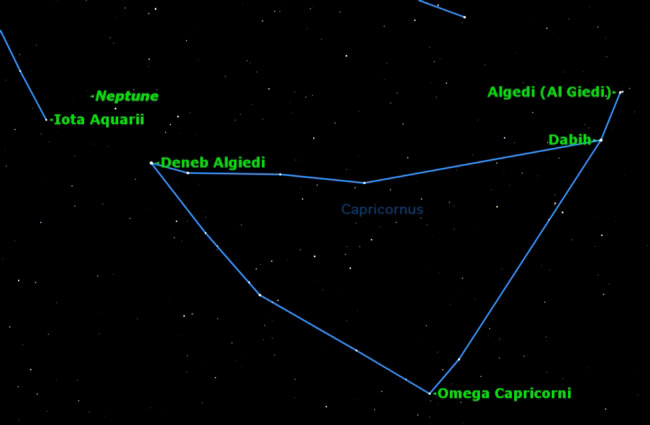[/caption]
Last week, Space.com had a great article about how on August 20, 2010, Neptune finally completed one orbit around the Sun since its discovery in 1846, and was now back to its original discovery position in the night sky . The original article was widely quoted, and created a lot of buzz on Twitter, Facebook and other websites. But then, later in the day some contradictory info came out, culminating with Bill Folkner, a technologist at JPL declaring via Twitter: “Neptune will reach the same ecliptic longitude it had on Sep. 23, 1846, on July 12, 2011.” Space.com ended up amending their article, but why the confusion? And could both statements be true? Depending on your perspective, perhaps yes.
“These apparently contradictory statements highlight the problems of defining planetary orbits,” astronomer Brian Sheen from the Roseland Observatory in the UK told Universe Today. “There are two ways of following the progress of a planet around the Sun/night sky.”
The first is from the perspective of being on planet Earth (specifically at the center of our planet) – called geocentric longitude, Sheen said, also known as right ascension.
The second is from the perspective of being on the Sun (specifically at the center of the Sun and indeed our solar system) which is called heliocentric longitude, and also ecliptic longitude.
“The orbital period of a planet is measured with reference to the heliocentric longitude, in the case of Neptune this is 164.8 years,” Sheen explained. “The problem of referencing via geocentric longitude is that the Earth itself is orbiting the Sun and therefore changing its relative position to the other planet, this case, Neptune.”
Neptune was discovered Sept 23, 1846. Adding 164.8 years to that date brings us to July 2011, and specifically 12th July. However taking the Earth’s motion into account we have a number of close approaches. Confusion about this situation is exacerbated by the fact that Neptune retrogrades at opposition.
And so, in April and July of this year (2010), Neptune came very close to returning to its apparent position in the sky at the time of its discovery (in geocentric right ascension and declination), actually much closer than it will be next year when it returns to its 1846 heliocentric longitude. It’s location at discovery and currently is in the constellation Capricornus.
But still, Neptune will not complete its first orbit since being discovered until in 2011.
“Given a discovery date of 23rd Sept 1846 and an orbital period of 164.8 years gives a return date of well into 2011 and a rough check gives 9-13 July,” Sheen said. “This accords well with the given date of 12th July.”
This gives us a celebration to look forward to in 2011!


Visualizing the planets as they wheel about thru space is a great mental gymnastic!
Visualization of 3 dimensional objects and their orbitals makes BOTH sides of our bicameral brains to fire up! This excites my pleasure centers anyway… and puts a silly grin/smile on my face! Thanks for that!
July 12, 2011 it is, for this should be measured by a 2-pi rotation of the anomaly angle.
LC